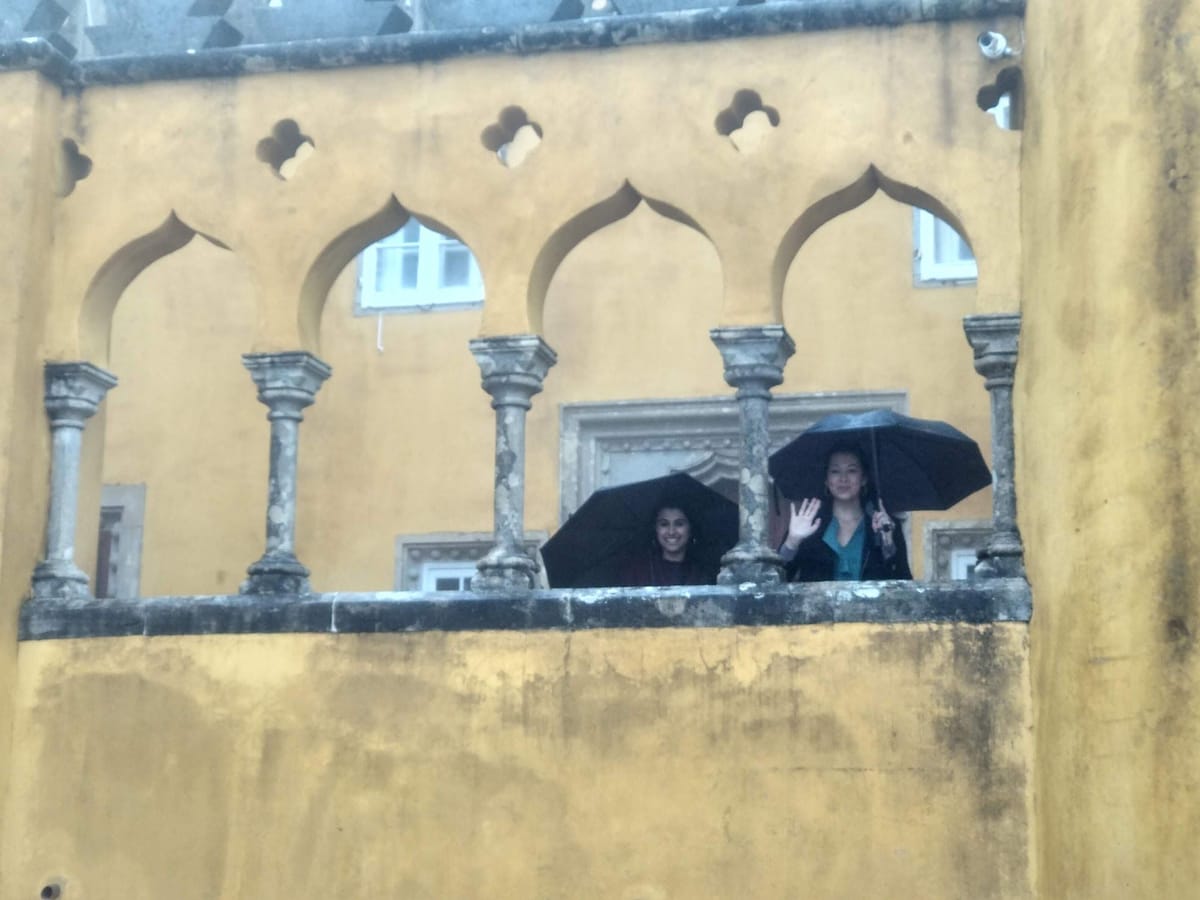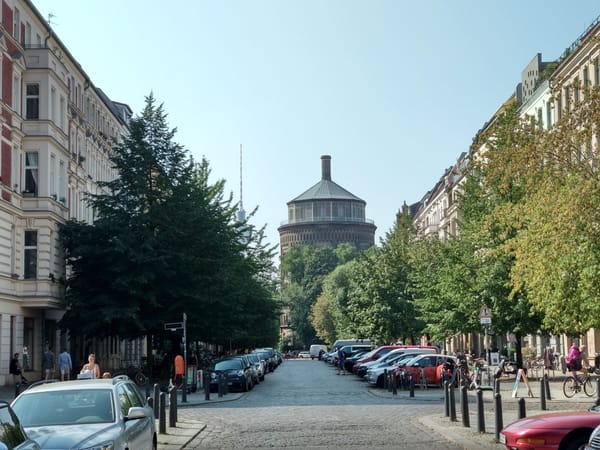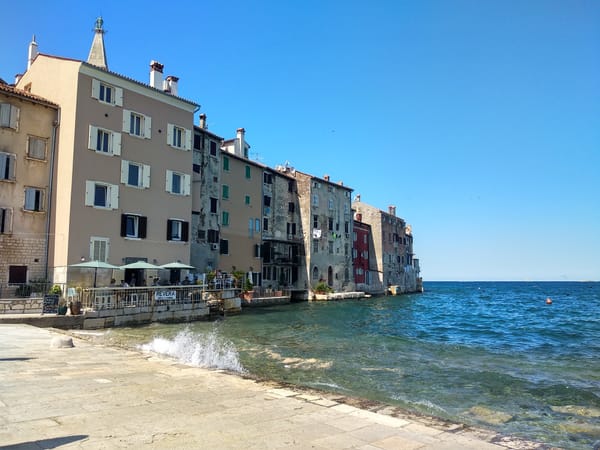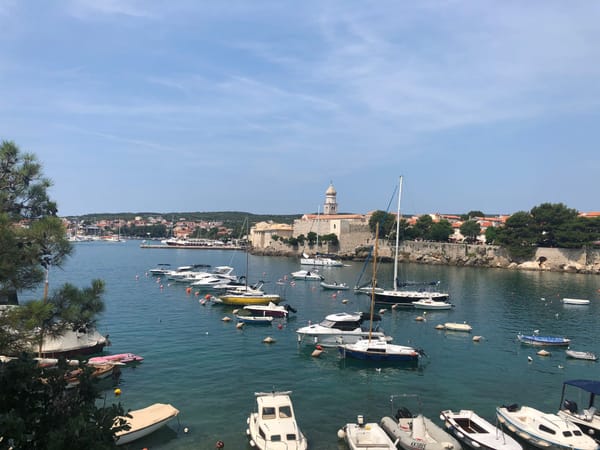How not to see Sintra
Before air conditioning was invented, if you were a Portuguese aristocrat, you would escape the summer heat by going to this town, known for its natural beauty and hospitable climate, but as we alighted from the train into the drizzle, escaping the heat was far from our minds.

Before air conditioning was invented, if you were a Portuguese aristocrat, you would escape the summer heat by going to this town, known for its natural beauty and hospitable climate, but as we alighted from the train into the drizzle, escaping the heat was far from our minds.
We had traveled to Lisbon to to meet up with my school friends Nikita and Sarah. We were all keen to explore the city, but it had rained all afternoon, so instead we had holed ourselves up in a bar with plenty of wine and cheese for the evening.
The following day, we got up early and took the train to Sintra. Walking out of the station with the slight fog of a hangover, we were immediately assailed by a crowd of touts.
"Tuktuk ride?"
"Four wheel drive tour?"
"Tour bus ticket?"
We didn't have a plan yet, nor had we eaten so we pushed past the ticket sellers and went in search of breakfast.
We tried to get into a cafe near the station, all steamy windows and cozy armchairs.
"Do you have a table?"
"No, you have to wait."
"How long?"
"I don't know, but you have to wait."
The second cafe we tried had a sign in the window declaring the owners were on holiday. We finally got a seat in the third place we tried, but the anemic-looking crepes and watery cappuccinos were not quite what we were hoping for. Still, the food perked us up and we were finally ready to see what Sintra had to offer.
Our number one priority, the Palácio da Pena on a hill behind Sintra, didn't seem far to walk so we set off. Our conversation stopped and our breaths grew ragged at we climbed the hill, through suburbs of grand old houses which looked all the more charming for their chipped, faded paintwork and overgrown gardens.

Eventually, even the houses stopped, we started slipping on yellow leaves as we made our way through a tall dark forest, tucking into the side of the road to avoid the continuous stream of tuktuks and tour buses.
The palace of Pena is of an old convent mashed into a bulbous eighteenth century fairy tale castle, with Moorish tiling and Indian style stone arches, painted in garish yellow and pink. If it sounds like a ridiculous over the top description, that's because it is. It is a building which, if it didn't exist, you would say was too fanciful. On a summers day, from the terrace you can see the land for miles around, but when we got there, it was looming ominously out of the mist instead.

The four of us love doing audio tours, so we collected our headsets and headed for the palace. We walked through halls decorated with Moorish and Portuguese tiles, and saw cutlery and chandeliers plated with New World gold and silver. Meanwhile the wind howled around the building and the rain poured down outside.

According to our guidebook, the palace has magnificent gardens, but as the rain showed no sign of stopping, we were more interested in indoor pursuits. We hailed a tuktuk and whizzed back down the hill to the Sintra's other royal palace, the Palácio Nacional de Sintra. After the crazy hues of the Palace of Pena, it looked much plainer - a more traditional white, boxy palace, but still with Moorish flourishes and a couple of giant cone-shaped chimneys tacked on the end.

However, once we were inside, stepping through the wood paneled halls and staring at the painted ceilings, we were impressed. The Heraldic room was particularly dramatic. A curved chamber with idyllic rural scenes formed out of azulejo tiles on the walls, it is so named because the enormous domed gold ceiling contains painted coats of arms from important noble families. It was also the room where, during the age of exploration, the discoveries of India and Brazil were announced to the Portuguese monarchs.

It was dark by the time we left the palace, and with aching feet and chilly fingers, we were in need of a cozy respite. This time, Sintra did not disappoint. We elbowed our way into Cafe Piriquita, sat down at a table and started listing the cakes we wanted from the menu to the waiter. The good thing about Portuguese pastries is they are small, so you can justify ordering several at once. I picked a Queijada, a cheesecake in a crisp pastry shell which you can scarf in one mouthful, and a Pastel de Cruz Alta, which came wrapped in paper and was crunchy, like a macaroon.

We were ready to get the train back to Lisbon, but we all agreed we had grossly underestimated Sintra, and we had unfinished business with the town. Although the mist and rain gives it a fairytale quality, I will make sure my next visit is on a sunny day.



